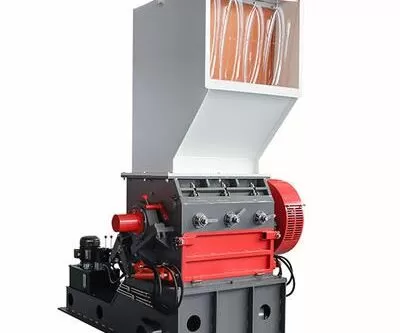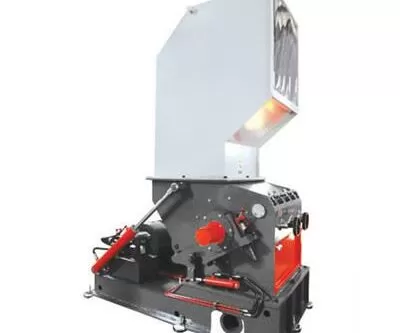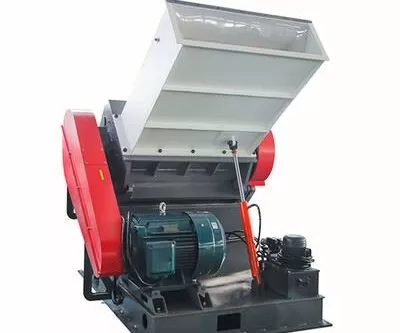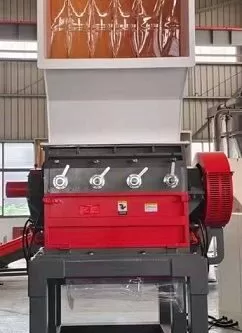Let me paint you a familiar scene — your company has pledged to be greener by 2030. But the clock is ticking, ESG reports are due, and the waste pile behind your factory is growing faster than your team’s enthusiasm for team-building workshops. Been there. The pressure to “go sustainable” is real, but let me tell you — it’s not just about buzzwords or PR. It’s about tools. And one unsung hero in that toolkit? The plastic crushing machine.
Plastic crushing machines play a pivotal role in helping companies hit environmental goals by enabling efficient plastic waste management, supporting recycling workflows, and reducing landfill reliance. Whether you’re dealing with post-industrial scrap or post-consumer plastic, a crusher turns chaos into resources.
Stick with me. I’ve helped countless manufacturers, recyclers, and processors on their sustainability journey. And I’ll tell you exactly how plastic crushing machines fit into that bigger green picture.

Why are companies under pressure to meet environmental goals?
Let’s start with the why.
More than ever, environmental regulations are tightening globally. From China’s “双碳” pledge to the EU’s Green Deal, companies face stricter reporting requirements and sustainability benchmarks. Consumers and investors? They’re watching too.
Sustainability is no longer a choice. It’s a license to operate. And for many manufacturers, plastic waste is one of the most visible sins to tackle.
Where does plastic crushing fit into the sustainability workflow?
Here’s the deal.
Recycling plastic is a multi-step process. But nothing starts without crushing. I always say: “No crush, no cycle.”
A plastic crushing machine (aka granulator) reduces plastic waste into uniform flakes. This:
- Prepares material for washing
- Reduces storage and transport volume
- Enables downstream recycling
Whether you’re recycling in-house or prepping material for external processing, crushing makes it all possible. It’s the unsung hero in the sustainability symphony.
How does crushing plastic support the circular economy?
The circular economy is a hot term. But it’s not magic. It’s mechanics.
In a closed-loop system, waste becomes raw material. A crushed plastic part today becomes your packaging tomorrow.
We’ve worked with clients who now crush:
- Factory rejects
- Trimmings and runners
- Returned packaging
That’s not just sustainability. That’s smart business.

What types of plastic can crushers handle?
A good question I get often.
The answer: Almost everything — if you’ve got the right machine.
At Amige, we build crushers for:
- Rigid plastics: like HDPE drums, PP crates, ABS housings
- Soft plastics: like LDPE films (with proper feeding systems)
- Tough plastics: like PC, PA, even engineering resins
Our clients use machines ranging from small 15kW units for minor scraps to monster 90kW crushers that chew through IBC tanks like popcorn.
How does crushing plastic reduce carbon footprint?
You heard that right — crushing saves CO₂.
By reducing volume:
- You ship less air
- You store more per square meter
- You reduce fuel used in recycling logistics
Not to mention, recycling plastic saves up to 80% of emissions compared to virgin plastic production. Crushing is the first step.
Sustainability isn’t just ideology. It’s measurable.
Can plastic crushing save your company money?
Oh yes. Let’s talk green — the dollar kind.
Here’s what you gain:
- Lower waste disposal costs
- Sellable plastic flakes
- Raw material substitution
I’ve had clients who went from paying to dispose of scrap, to earning by selling it. One even created a closed-loop line using their own crushed plastic, saving six figures annually.
Profit and planet? Crushing makes it possible.

What features matter when choosing a crushing machine?
Here’s where I flex a little.
As Amige’s CEO, I’ve spent years refining what makes a great plastic crusher. When you’re shopping, look for:
- Blade design (V-type or flat-type depending on your plastic)
- Material compatibility (PP, PET, PVC, etc.)
- Feeding options (hopper, conveyor, hand-loaded?)
- Noise and dust controls
- Easy maintenance access
Your machine should match your plastic and your goals — not the other way around.
How do I integrate crushers into existing production?
Don’t worry — it’s not surgery.
Most of our clients install crushers:
- At the end of a production line to catch waste
- Next to a shredder for pre-sized input
- Before a washing or extrusion system
Whether batch or continuous, we help design layouts that fit your workflow, not disrupt it. Sustainability should be seamless.
Are there examples of real companies doing this right?
Absolutely. One of our clients — a packaging manufacturer in Guangdong — used to send 40 tons of plastic scrap to landfill every month.
We helped them install:
- A customized 75kW crusher
- Feeding conveyors
- An air cyclone separator for dust control
Now? They crush in-house, wash the flakes, and reuse the plastic in extrusion. Waste reduced by 90%. Carbon footprint slashed. Bosses happy. Earth happy.

What’s next after installing a crusher?
Crushing is the beginning, not the end.
Next steps could include:
- Plastic washing lines
- Dryers
- Pelletizing systems
Want full circularity? Think closed-loop manufacturing or selling recycled pellets. Crushing unlocks the door. We’re happy to help you walk through it.
Conclusion
Plastic crushing machines aren’t just metal boxes — they’re your gateway to serious sustainability. They reduce waste, cut emissions, and generate revenue. If you’re serious about hitting your environmental goals, a crusher isn’t optional — it’s essential. Let’s make green work.
